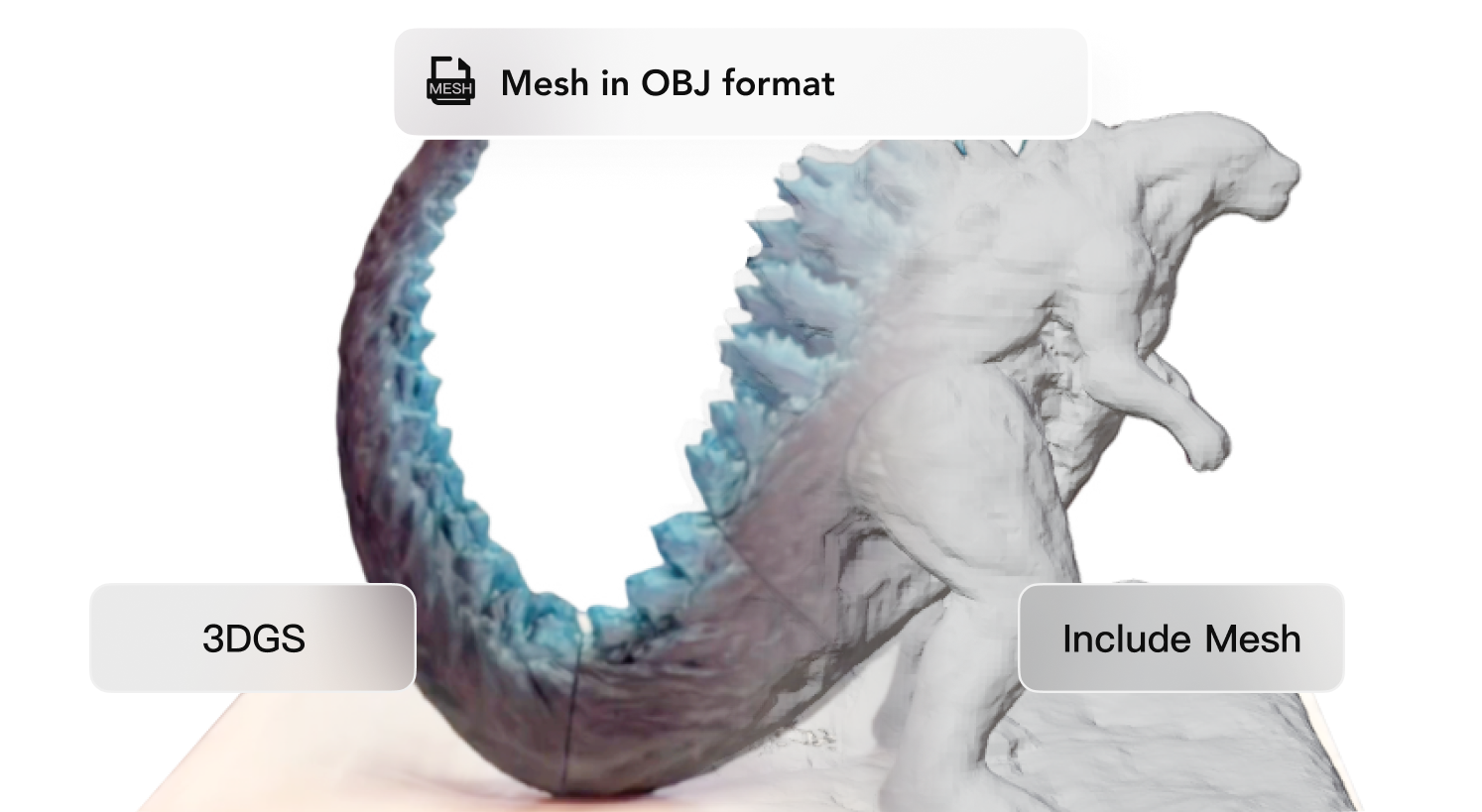3D Gaussian Splatting (3DGS) is a revoluntionary technology in the world of 3D scanning, as it allows for high-fidelity restoration of scenes from the real world by processing a short video. However, the peculiar file format of 3DGS makes it incompatible with most 3D engines. There are sources such as XV3DGS Plugin for Unreal Engine and KIRI's own Blender Plugin that allow you to view and render the 3DGS files within these engines.
Despite the resources, the versatility and practicality of 3DGS visualizations remain limited in a world of mesh-dominant 3D creations. If you are looking to obtain a reliable 3D representation of objects from real life, a mesh-based 3D model will always be the safest bet at the moment.
Luckily, KIRI Engine's Mesh-Inclusive 3DGS feature allows the 3DGS projects to be exported as mesh files. This feature was co-developed by KIRI Innovations and individual developer Chongjie Ye.
To enable Mesh-Inclusive 3DGS (or rather 3DGS to Mesh), it needs to be completed upon the initial project upload. When uploading your files for 3DGS processing, select 'Save Mesh,' and there will then be two different files generated, one 3DGS file in its native format, as well as a mesh model of the same thing, stored in the 'Scans' list. This mesh model can be exported in all supported formats for its Photo/Featureless Object Scan counterparts, and has access to other advanced features such as PBR materials, Quad-Mesh Retopology, etc.
.png)
.png)



